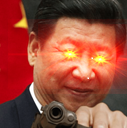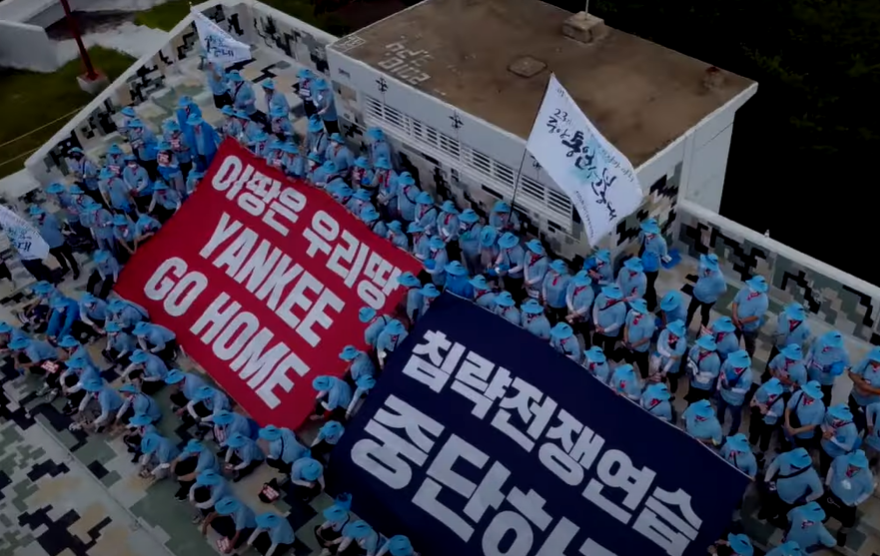Get involved with ProleWiki! https://prolewiki.org/
- 9 Posts
- 10 Comments
The part of this section that stood out for me begins with section 17, “Will it be possible for private property to be abolished at one stroke?”, where Engels basically explains that there is no instant communism button:
No, no more than existing forces of production can at one stroke be multiplied to the extent necessary for the creation of a communal society.
In all probability, the proletarian revolution will transform existing society gradually and will be able to abolish private property only when the means of production are available in sufficient quantity.
Very often, people ask, “What will XYZ be like under communism/‘after the revolution’?” asking about various laws, industries, work, housing, and ways of manufacturing and acquiring goods and services. I think in many cases, the answer to these questions is a lot more mundane than some people might initially imagine. We see in section 18 a series of ideas of what a proletarian-led society might democratically implement for itself at the start of proletarian leadership. And, as OP pointed out, we see many of these (or similar) measures underway in AES countries today, providing us real-life examples of the process that we can learn from as it develops.
I think it’s worth noting that Engels points out that these would basically be democratic measures undertaken by the proletarian-led society to continually reduce the prevalence of private property, using various methods to increasingly concentrate “all capital, all agriculture, all transport, all trade” into the hands of the proletarian state, with the basic aim of ensuring the livelihood of the proletariat, and multiplying the society’s productive forces until “production will so expand and man so change that society will be able to slough off whatever of its old economic habits may remain.”
As we can see from the real-life AES examples, this is a long process, with some changes being rapid and dramatic and easily intuitive to the average person, and others taking decades of time and having many possible approaches as well as many possible pitfalls, since longer term and larger scale generational changes like that are often harder for people to perceive and carry out from their individual position without learning more in depth about it. (Actually, on that point, I am glad that Engels specifically mentions education in section 18, as I believe it’s an important part in conveying the function of these longer generational processes to individuals in the society and strengthening their self-understanding of how they participate in building and directing their society.)
I think sections 17-20 could be good to go over with people who seem unclear on how (or why) socialist construction would take place, and on the meaning of terms like socialist-oriented market economy, socialist market economy, etc., as well as going into the reasons why development of the means of production is important (and how and why imperialism purposely hinders and sabotages that development in certain places).
Those are my thoughts, if anyone notices errors in my reasoning or understanding of the text, please point them out.
Thanks for leading this study group, I’m looking forward to its continuation.

 3·1 year ago
3·1 year agoThe article also mentions and links this other interesting article: How America Broke Its War Machine: Privatization and the Hollowing Out of the U.S. Defense Industry

 7·1 year ago
7·1 year agoSome excerpts:
The International Institute of Strategic Studies, in its latest journal, delivers this withering verdict in an authoritative study: “The armed forces in European NATO and European Union member states are hollowed out, plagued by unserviceable equipment and severely depleted ammunition stocks.”
Few people understand the remarkably protracted lead times necessary to increase arms production. Two or three years between commitment and delivery of even some basic munitions and materials is standard. Those NATO nations still accustomed to fight at all — meaning mostly the US, UK and France — have focused upon relatively small outputs. The factories do not exist to provide long runs of — for instance — conventional artillery ammunition any time soon.
Britain’s BAE Systems recently told the Pentagon it would require at least 30 months to restart production of M777 howitzers, among the most vital weapons in Ukraine’s defense; a new £190 million deal with the British government for 155mm shells will have a similarly lengthy timeline. Germany’s Rheinmetall quotes at least a year for renovation and modernization of battle tanks, given production times of specialized steel and electronic components.
Prices for raw materials used in arms production but not mined in EU countries have risen astronomically. The French government recently asked MBDA Missile Systems to increase its production of Mistral air-defense systems from 20 units per month, and has been offered only an increase to perhaps 40 monthly by 2025.
Moreover, all the big manufacturers are wary of funding expansion, only to find the Ukraine war suddenly ending or governments continuing to resist rearmament.
During World War II, the US government owned almost 90% of the nation’s productive capacity of aircraft, ships, guns and ammunitions. Today, private industry accounts for nearly all new procurement. […] Moreover, many parts of key weapons systems are now produced abroad; the supply chain for the F-35 fighter, the most expensive military contract in history, included a magnet sourced from China.
China is building major items of defense equipment five times faster than the US. Maintenance delays, especially in the Navy, are crippling combat readiness. Earlier this year, William LaPlante, the under secretary of defense for acquisition, told the New York Times that the US “really allowed production lines to go cold and watched as parts became obsolete.”
In the early months of the war, Ukraine sometimes expended up to 500 Javelin anti-armor weapons in a single day — burning through a third of the US stockpile in the first weeks of the conflict. Lockheed Martin and Raytheon, which now jointly produce 2,100 Javelins a year, say they will double that figure — but not until 2025 at the earliest.
Ukraine, to a considerable extent, depends on munitions shipped through third parties by South Korea, 56% of whose voters oppose direct military aid. Seoul is selling $13.7 billion worth of tanks, jet and other munitions to Poland. In 2023, it is shipping hundreds of thousands of artillery rounds, some of them to the US, enabling transfers to Ukraine.
Russia faces not so much a shortage of tanks, weapons and military equipment generally, but is obliged to rely increasingly on older materiel as its most modern kit is destroyed. […] Yet Russia retains some advantages over the West: Because its economy and industries are subject to direct control from the Kremlin, Putin can focus his nation’s arms production on the munitions he needs most in Ukraine.
Ukraine is a historic test of Western will and staying power. Not for the first time in history, the outcome of the struggle will be determined not only on battlefields, but also in the factories of the West.
This is the first time I’ve actually read through this whole piece instead of reading just a few of the points. I was less educated in Marxism when I first read (some) of it, but now the text feels much richer and more informative to me than before. Like what @cucumovirus said in their post, the Manifesto really overshadowed this work in my earlier study of Marxism, but now I see that Principles of Communism is a very clear and informative work and I see why it is so often recommended.
- What was bad about the text?
I agree with the issues being pointed out already in this thread and don’t have much to add on that point.
- What was good about the text?
I think it was good that he covered the questions “In what way do proletarians differ from slaves … from serfs? … from handicraftsmen? … from manufacturing workers?” by explaining the trajectories of their motion as a class toward either the proletariat or the bourgeoisie. As he words it in section 5 “two new classes [bourgeoisie and proletariat] have been created which are gradually swallowing up all the others”. In each of these sections he explains the individual ground-level moves available to people in these classes on an individual scale, which over time, on the societal scale, causes their classes to gradually drain into being proletarians (for the most part) or bourgeoisie (in some cases).
I’m glad he covers this so clearly because I remember when first being introduced to Marxism, me and others I was studying with were full of questions about people whose relation to the means of production places them outside of being either proletarian or bourgeoisie. I think this explanation by Engels really captures the idea that the relations and processes in motion and development on a society-wide scale are what Marxists are focusing on in most cases rather than what some single individual’s literal current position is in society.
- Overall, how can we apply this reading to our current conditions?
In section 13, Engels writes “the very qualities of big industry which, in our present-day society, produce misery and crises are those which, in a different form of society, will abolish this misery and these catastrophic depressions” and says that we see “with the greatest clarity” that all these evils are to be ascribed “solely to a social order which no longer corresponds to the requirements of the real situation”. This is obviously a point that still stands today, like most/many of the things in this text. I would just say that in our current conditions there are a multitude of present day examples we can point to which highlight the absurdity of how far the capitalist management of society has now strayed from “the requirements of the real situation”. I think on this forum we can all easily think of present day examples right away, so I won’t get into specifics. Additionally, we now also have past and ongoing examples of proletarian-led production/society, experiments and attempts at such on a scale which Engels never got to see, which helps us refine our understanding of how capitalist-led production vs. proletarian-led production “corresponds to the requirements of the real situation” in practice and in the present day conditions.

Even as orders start to pile in, the fear in the industry is that it could expand production only to find that when new facilities open in three or five years’ time, there is no demand. Governments have backtracked on plans before and many European capitals have repeatedly failed to meet NATO targets on stockpiling or the pledge to spend at least 2% of gross domestic product on defense. NATO allies on Friday agreed a firmer commitment to hit the 2% target.
Ugh, last year Mark Esper(*) was in Korea salivating about the 2% defense spending target as well (@18:22), regarding the USA’s Pacific allies and listing off what kind of products he wants them to buy, at a think tank hosted by the Unification Church.
(*) For those unaware of this guy, he’s a former Raytheon “vice president of government relations”/lobbyist turned US Defense Secretary and now once again works for some “defense” manufacturing company (he might be the CEO iirc) while being on multiple think tanks like the Atlantic Council and Council on Foreign Relations and says Asia should have it’s own NATO (the “Quad”), selling it by fearmongering/BSing about China and DPRK
Side note, the forums where these mfs sales pitch this stuff to each other look like something out of a film:

Great, I like this idea. Looking forward to it.

 2·1 year ago
2·1 year agoThanks for the response, I’ll check out the writings you linked!
Interesting idea about the quiz, I’d be curious to see what you do with that if you make something like that.

 12·1 year ago
12·1 year agoHappy birthday, I’m glad you’re here. Thank you for always finding and posting interesting information, you do a lot of digging and I like that you provide a lot of quotations when you share information. I’ll definitely check that film out.
Feel free to ask me anything
Have you thought about writing articles about any of the topics you’ve done a lot of looking into?

 6·1 year ago
6·1 year agoVery good summary of the origin’s of Korea’s division and the Korean war.
Some extra information to add on:
A 1946 opinion poll appearing in Korea’s Dong-A Ilbo newspaper showed a majority of respondents favoring socialism as their preferred system, and less than 15% supporting capitalism. Together, socialism and communism received 77% support from survey respondents. (Source)
In 1950, when the Korean People’s Army had taken control of Seoul, the CIA wrote that “over 50% of Seoul’s students are actively aiding the Communist invaders, with many voluntarily enlisting in the Northern Army” and that among Seoul’s population, “the working class generally supports the Northern Koreans” adding that the streets of Seoul were “crowded […] especially with youths engaging in Communist demonstrations.” (Source)
Meanwhile, here is the person backed by the US to run the southern regime:
Syngman Rhee who was the first president of the Republic of Korea, is responsible for the killing of 30,000 Jeju islanders between 1947 and 1954 (during the Jeju April 3rd Massacre). Secondly, he is responsible for the massacres of one million civilians during the Korean War (1950~1953), and finally, he illegally amended the Constitution in 1954, aiming for long-term seizure of power and initiated fraudulent election in 1960. (“Letter from 252 South Korean NGOs against Syngman Rhee Day”)
A 1948 CIA report wrote regarding Rhee that “there is every prospect that Rhee’s accession to power will be followed by intra-party cleavages and by the ruthless suppression of all non-Rhee Rightist, Moderate, and Leftist opposition,” characterizing Rhee as an “imported expatriate politician” and “extreme rightist” and demagogue “bent on autocratic rule”, who would be an “unpopular” figure who would play into communist propaganda due to his extreme rightist orientation, and stating that the U.S. throwing their full support behind him could potentially be “a source of future embarrassment to US policy in the Far East.” (Source)










Thanks for your reply!
One suggestion I would make is when you make a new thread, post a link back to the previous week’s thread so people can easily click back through them like a chain. Personally I think the timing and formatting so far are good, but of course, there is no harm in experimenting to find improvements. Thanks again for hosting this study group!